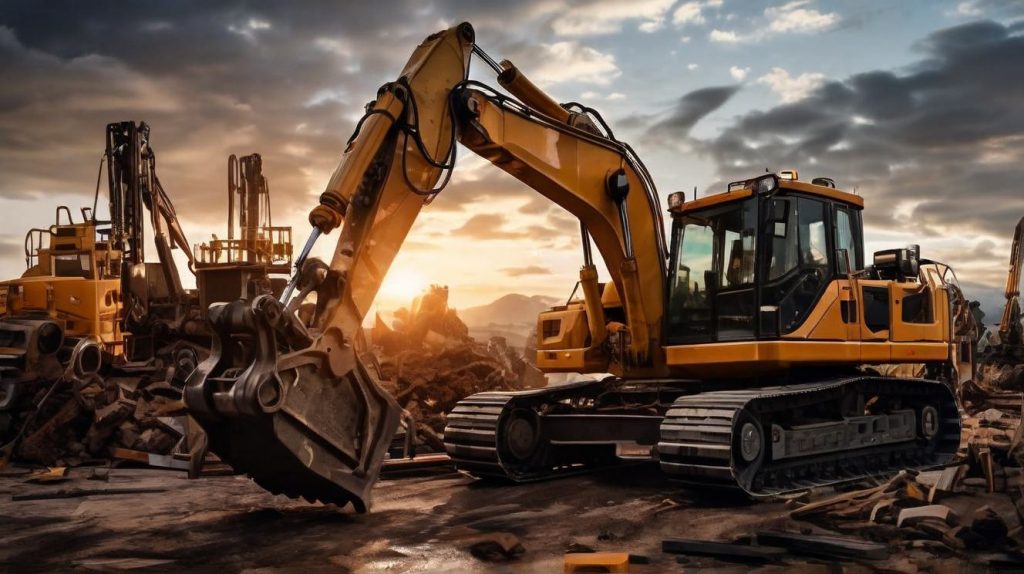10 Common Problems in Construction Equipment and How to Fix Them
ArticleConstruction equipment is essential for heavy-duty tasks, but frequent use can lead to wear and tear, breakdowns, and other performance issues. Knowing how to troubleshoot and address these common problems can save time, reduce costs, and keep projects on track. Here’s a guide to some of the most common problems in construction equipment and practical tips on how to fix them.
1. Hydraulic System Leaks
Hydraulic leaks are a frequent issue in construction equipment like excavators and loaders. Leaks often occur in hoses, seals, or fittings due to pressure or wear. To fix this, inspect the hydraulic system thoroughly, paying attention to visible signs of wear or damage. Replace any damaged hoses, seals, or fittings, and make sure connections are secure. Regular maintenance checks can help catch early signs of leaks and prevent more severe hydraulic issues.
2. Engine Overheating
Engine overheating is a common problem in construction machinery, especially in hot weather or high-stress environments. Causes include clogged air filters, low coolant levels, or a faulty radiator. To address overheating, start by cleaning or replacing air filters and checking coolant levels. Ensure the radiator is free of debris, and if overheating persists, inspect the water pump and thermostat. Regularly checking these components helps prevent overheating and extends engine life.
3. Battery Failure
Battery failure can lead to equipment downtime, often caused by poor connections, corroded terminals, or simply old batteries. Start by inspecting the battery terminals for corrosion and clean them as needed. Ensure all connections are tight and, if necessary, replace the battery if it’s beyond its expected lifespan. Regularly charging batteries and checking connections is an easy preventive measure to avoid unexpected failures.
4. Transmission Issues
Transmission problems in heavy equipment like bulldozers and loaders can result in poor performance or complete breakdowns. Signs of transmission trouble include delayed movement or strange noises. To troubleshoot, check the transmission fluid levels, as low fluid can cause shifting problems. If the fluid is fine, inspect the gears and clutches for wear and tear. Routine maintenance and timely fluid changes are essential for prolonging transmission life.
5. Electrical System Failures
Electrical issues are common in construction equipment and can be challenging to diagnose. Problems often include faulty wiring, blown fuses, or malfunctioning sensors. Inspect all wiring connections and replace any damaged cables or fuses. Use diagnostic tools to check sensors and circuits if the issue persists. Electrical system inspections during maintenance can prevent these issues from arising unexpectedly.
6. Worn Out Tires or Tracks
Equipment like loaders and excavators rely heavily on their tires or tracks, and wear can impact performance and safety. For tires, check for signs of cracking, bulging, or low tread, and replace them if necessary. In tracked equipment, look for signs of worn or loose tracks and ensure they’re properly aligned. Regular inspection and replacement of tires and tracks prevent excessive wear and maintain stability on construction sites.
7. Issues with Hydraulic Attachments
Hydraulic attachments, like breakers or augers, may experience performance issues due to low hydraulic pressure or blockages. To troubleshoot, first check the hydraulic pressure settings and ensure they match the attachment requirements. Clean any dirt or debris from attachment points, and inspect for leaks or damaged hoses. Proper maintenance of attachments, including lubrication and cleaning, helps prevent these issues from disrupting work.
8. Oil Leaks and Contamination
Oil leaks or contamination can affect engine performance, increase wear, and lead to costly repairs. Check seals, gaskets, and filters regularly for signs of leaks. To fix oil contamination, replace the oil filter and drain the oil, then refill with fresh oil. Frequent oil checks and timely oil changes are crucial to avoiding engine damage caused by contaminated or low-quality oil.

9. Cooling System Malfunctions
Cooling systems are vital for preventing overheating in heavy equipment. Common problems include clogged radiators, failing water pumps, or faulty thermostats. Start by cleaning the radiator to ensure efficient cooling. If the equipment still overheats, inspect the water pump and thermostat and replace them if necessary. Regular cooling system maintenance helps avoid costly repairs and prolongs engine performance.
10. Faulty Brakes
Brakes are critical for safety in construction equipment, and issues like worn brake pads, low brake fluid, or hydraulic brake malfunctions can compromise performance. Check the brake pads for wear and replace them if needed. Inspect the brake fluid levels, and bleed the brakes if they feel soft or unresponsive. Regular brake inspections are essential for ensuring operator safety and preventing accidents.
Construction Equipment Maintenance Tips
Preventive maintenance is key to avoiding these common problems. Implement a routine maintenance schedule that includes checking fluids, inspecting hydraulic systems, cleaning air filters, and tightening loose components. Regular lubrication of moving parts reduces friction and wear. Keeping a maintenance log helps track repairs, replacements, and recurring issues, providing insight into the equipment’s condition and helping to plan timely interventions.
Repair Costs for Construction Equipment
Repairing construction equipment can be expensive, especially for heavy machinery. Labor costs, parts, and downtime all contribute to repair expenses. Preventive maintenance and timely repairs are the best strategies for minimizing costs. For critical repairs, evaluate whether it’s more economical to repair or replace the component based on age, condition, and frequency of repairs. Investing in quality parts and proper maintenance often pays off by reducing long-term repair costs.
In conclusion, maintaining and troubleshooting construction equipment is essential for efficient and safe operations. Regular inspections, proper maintenance schedules, and understanding common repair needs can keep equipment in peak condition, minimize downtime, and avoid costly breakdowns. By addressing these common issues promptly and proactively, you can extend the lifespan of your equipment and maintain smooth construction operations.
